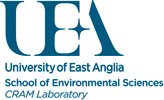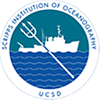Background on Atmospheric oxygen measurement
Atmospheric oxygen (O2) measurements are used to provide insight and quantitative understanding of the global carbon cycle [Bender et al., 1996; Bender et al., 1998; Keeling and Shertz, 1992]. More recently they have been used in other applications such as understanding air-sea gas exchange [Keeling et al., 1998] and critiquing ocean biogeochemical and atmospheric transport models [Battle et al., 2006; Stephens et al., 1998].
Atmospheric O2 measurements were first established in 1988 by Professor Ralph Keeling at Scripps Institution of Oceanography [Keeling, 1988], and are now made at ~12 laboratories around the world, and at ~25 field stations. The measurements are extremely challenging. For example, the relative precision required, as stipulated by the World Meteorological Organisation Global Atmosphere Watch (WMO/GAW), is 0.0001%. By contrast, the WMO/GAW-required precision for CO2, also considered challenging, is only 0.03%.
For this reason, it has not been possible to establish an absolute atmospheric O2 calibration scale. In addition, essentially owing to the fact that O2 is not a trace gas (atmospheric abundance ~20.95%), it is inappropriate to report O2 concentrations in ‘traditional’ units such as ppm. Thus O2 concentrations are expressed relative to arbitrary zeros, and as O2/N2 ratios in ‘per meg’ units (analogous to the ‘per mil’ unit typically used in stable isotope work, but where the ratio is multiplied by 106 rather than 103 because of the much smaller changes observed).
Calibration scales and the definition of ‘zero’ vary between laboratories, and each laboratory attempts to maintain the stability of their calibration scales over time via suites of high pressure gas cylinders. The GOLLUM programme was established in 2004 to bring together the various O2/N2 calibration scales to facilitate merging of datasets from different field stations, and thus, ultimately, to enhance the versatility of O2/N2 measurements and their applications in advancing Earth system science.
The programme consists of two sets of 3 high pressure cylinders which continually rotate (in opposite directions) amongst the participating laboratories. Results from analyses of these cylinders establish calibration scale offsets between laboratories, as well as monitor possible scale changes or drift over time. In addition, glass flask samples filled with identical air are periodically analysed by those laboratories with flask analysis capabilities.



